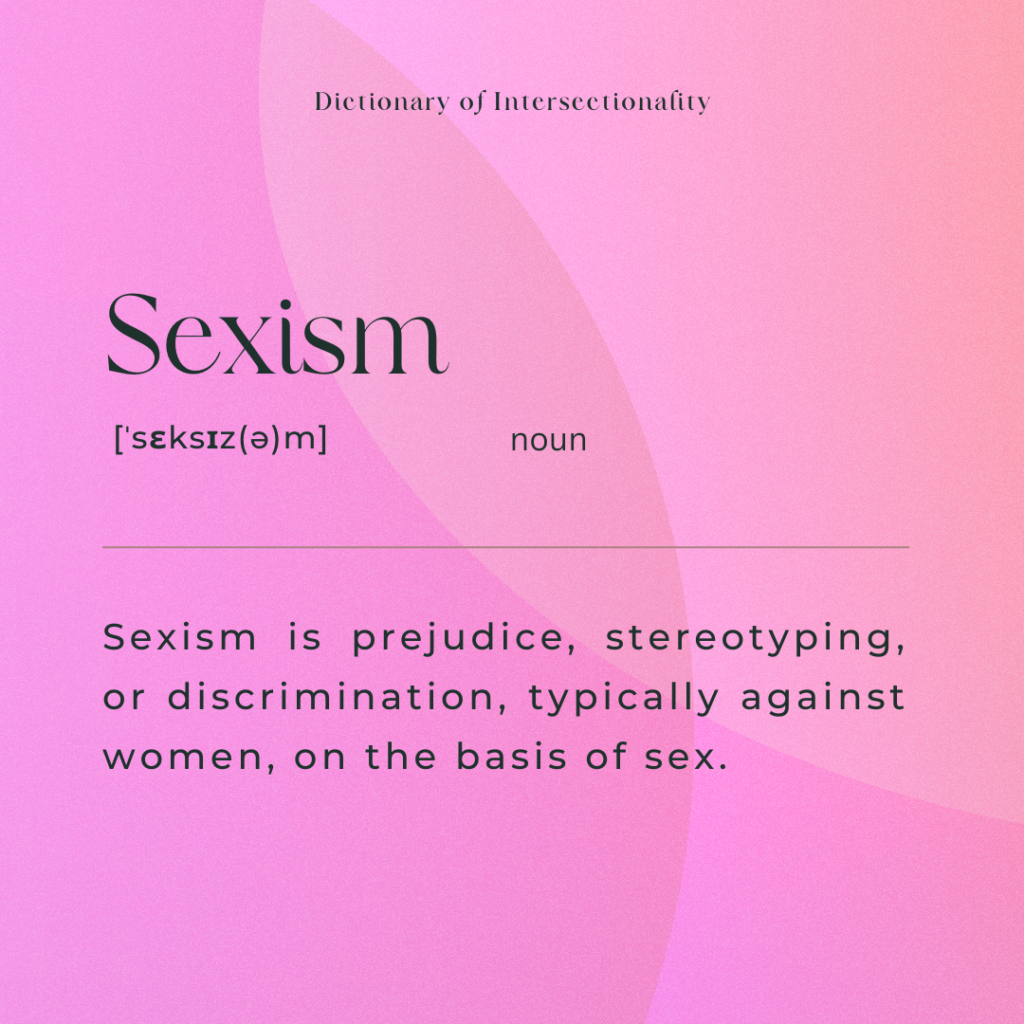
Sexism is prejudice, stereotyping, or discrimination, typically against women, on the basis of sex.
Sexism is linked to the acceptance of sex-role stereotypes: a belief that one sex is superior and more valuable than another.
It implies that there are limits on what men and women can and should do and often restrict women’s behavior to fit existing patriarchal norms by confining women to roles with less status and power than those of men.
Sexism occurs at multiple levels: individual, organizational, institutional, and cultural.
It may be overt or blatant in the form of open and visible endorsement of harmful and unequal treatment of women. It may be covert, involving the hidden forms of sexist beliefs or attitudes that are revealed only when it’s believed to be safe to express them. It may be subtle, which often goes unnoticed because it is built into cultural and societal norms and is part of everyday behavior.
The extreme form of sexist ideology is misogyny, the hatred of women.
See more resources
American Psychological Association. (2015). APA Dictionary of Psychology (2nd ed.)
Glick, P., & Fiske, S. T. (1997). Hostile and benevolent sexism: Measuring ambivalent sexist attitudes toward women. Psychology of Women Quarterly, 21(1), 119–135. https://doi.org/10.1111/j.1471-6402.1997.tb00104.x
Masequesmay, G. (2022, August 26). sexism. Encyclopedia Britannica. https://www.britannica.com/topic/sexism
Swim, J. K., & Cohen, L. L. (1997). Overt, Covert, And Subtle Sexism: A Comparison Between the Attitudes Toward Women and Modern Sexism Scales. Psychology of Women Quarterly, 21(1), 103–118. https://doi.org/10.1111/j.1471-6402.1997.tb00103.x
Oxford English Dictionary
